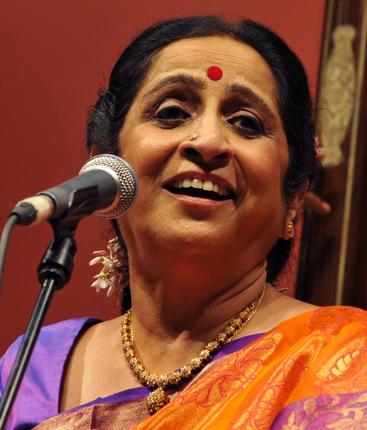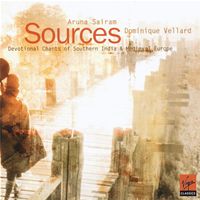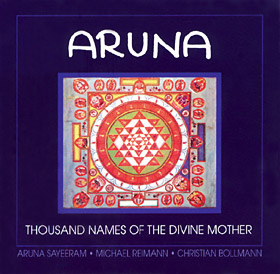Aruna Sairam meets Agam
-

A concert featuring a Carnatic doyenne and a rock band ventured into territory that was almost new, says M.V. Ramakrishnan.
There is nothing new about associating Indian classical music with Western rock. Fifty years ago, the Beatles and Rolling Stones introduced Indian colours marginally into their music, giving rise to a trend known as Raga Rock.
Today, with the proliferation of television channels and music shows, numerous talented rock bands have sprung up in India, with many trying to mix the nuances of Western rock with Indian classical and popular music. For many such bands in the South, the main source of inspiration is Carnatic music, and outstanding among them is Agam, a band of seven music-minded software professionals from Bengaluru.
The 12-year-old ensemble, which has been steadily gaining popularity, suddenly found itself catapulted into the stratosphere last week, performing at The Music Academy in the exalted company of Aruna Sairam, one of the most popular vocalists in Carnatic music today.
Aruna is well-known for her majestic projection of the conventional elements of Carnatic music such as outlining melodies, articulating sacred compositions, elaborating selected phrases of lyrics, and improvising melodic variations, which establish her credentials as a formidable Carnatic vocalist.
She has an exuberant way of rendering specific songs that invoke compelling spiritual visions — such as Krishna dancing on the serpent’s hood, earnest devotees appealing to Durga to wake up at dawn, or a boyish Krishna pleading with his mother to let him go cow-herding in the forest. And Aruna’s adoring audiences everywhere clamour endlessly for these visions to be re-enacted.
Aruna has a natural flair for innovation, and she has effectively integrated a genre of lilting Marathi devotional songs called Abhangs into her Carnatic music concerts, which is one of the main reasons for her immense popularity.
The same adventurous spirit induced her to team up with French musician Dominique Vellard in 2012 (to marvellously transfuse the bloodstreams of Carnatic music and the Gregorian chant) and with Indian classical dancer Malavika Sarukkai in 2013 for a sight and sound collaboration.
It wasn’t, therefore, surprising that Aruna’s quest for innovation should have led her to collaborate with Agam, but the idea was intriguing.
Obviously, it could not be an initial attempt to discover common ground between two alien systems of music, because Agam had already started that voyage. Rather, the issue here was more about just how far the joint venture could add value to the accomplishment of the seasoned diva and the enterprising set of younger musicians.
It was obvious, too, that there wouldn’t be much scope for the rock idiom to enhance the quality of Aruna’s glorious music in any manner. So, the question really boiled down to this: how far would Aruna’s association enhance the quality of Agam’s evolving art?
The answer, I found, was this: her very presence on the stage as a performer lifted the image, morale and standard of the ensemble sky-high. By merely putting her stamp of approval on their enterprise, it certified the integrity of their objectives.
The programme featured, among other things, four sacred songs of the venerable composers Tyagaraja (‘Manavyala’ in Nalinakanti, and ‘Bantureeti’ in Hamsanadam) and Muthuswami Dikshitar (‘Rangapura Vihara’ in Brindavana Saranga and ‘Subrahmanyena’ in Suddha Dhanyasi).
The band had a vocalist and half a dozen instrumentalists playing a synthesizer, electric guitars and drums. Aruna chose to play only a marginal role, and did not overshadow the strong voice of vocalist Harish, the band’s frontman. But her judicious interventions and moral support inspired Harish to soar to a far higher altitude than his usual standard, as can be seen from several videos available on YouTube.
Subsequently, Aruna did take the lead with a vigorous abhang and her evergreen cowherd song. But even here, the prima donna could not resist letting the limelight fall on Harish, by assigning him the role of the boyish Krishna.
Related Albums

Trialogue
Published : 2012
By : Glossa Music
Sources
Published : 2000
By : EMI Records / Virgin Classics - France
Aruna - Thousand Names...
Published : 1995
By : Lichthaus Music...
Related Concerts
- Ojai Music Festival 2017
On : Sunday, June 11, 2017 - Aikya 2019 - Sanyoga
On : Saturday, November 30, 2019 - Bharat Sangeet Utsav 2019
On : Saturday, November 9, 2019 - HEAVEN & EARTH at Sacred Music Festival 2018
On : Sunday, February 4, 2018

 Photos
Photos